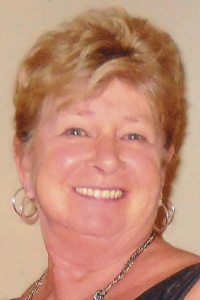Claire Ann “Cookie” Audette, 76, of Fairhaven died November 4, 2022 at home after a long courageous battle with cancer, surrounded by her family.
Born in Acushnet, daughter of the late Ulric O. Audette and Doris (Lelievre) Medeiros, she lived in Fairhaven all of her life.
She was formerly employed as a cashier at Shaw’s Supermarket in Fairhaven for many years until her retirement.
She enjoyed the company of her cat Victoria.
Her family would like to thank her cousin Alice and her husband Roger and her niece Natalie and her husband Steve for bringing her to doctors appointments in Boston.
Survivors include her son, Robert Pombo and his fiancée JoAnn Tavares of Fairhaven; 2 daughters, Susan Foley and Sandra Medeiros, both of Fairhaven; 2 sisters, Diane Mareiro of Rochester and Jackie Hinkley of Fairhaven; 4 grandchildren, Brooke, Lauren, Bobby and Brayton; 5 great-grandchildren; nieces and nephews.
She was the sister of the late Robert Audette.
Her family will receive guests on Saturday, November 19th from 9-10 am followed by her Funeral Service at 10 am in the Saunders-Dwyer Mattapoisett Home for Funerals, 50 County Road, Route 6, Mattapoisett. In lieu of flowers, donations in her memory may be made to the American Cancer Society. For directions and online condolence book, please visit www.saundersdwyer.com.
